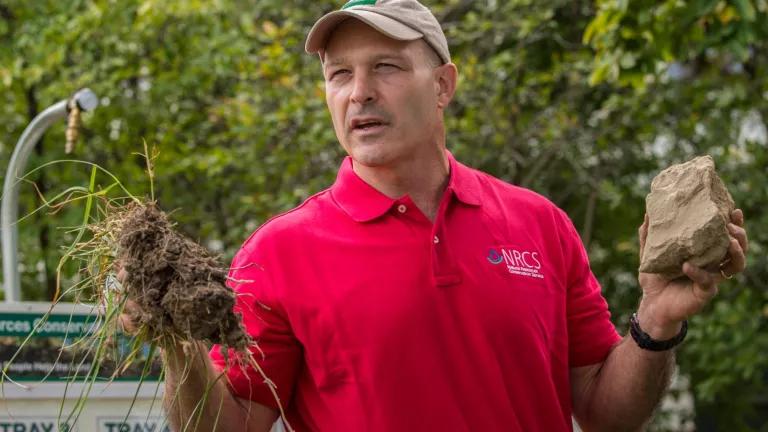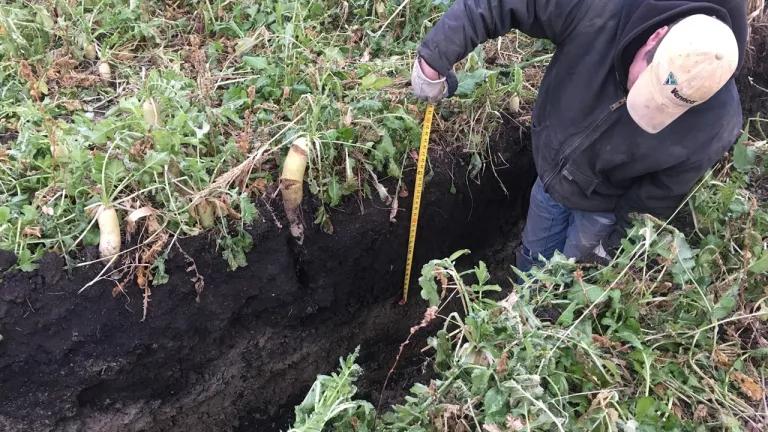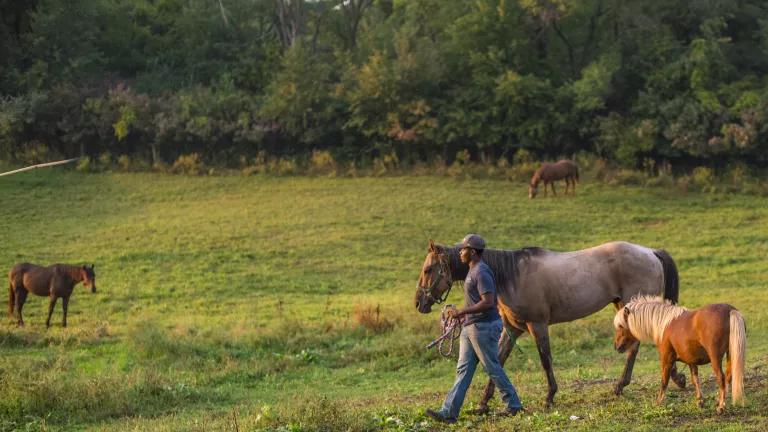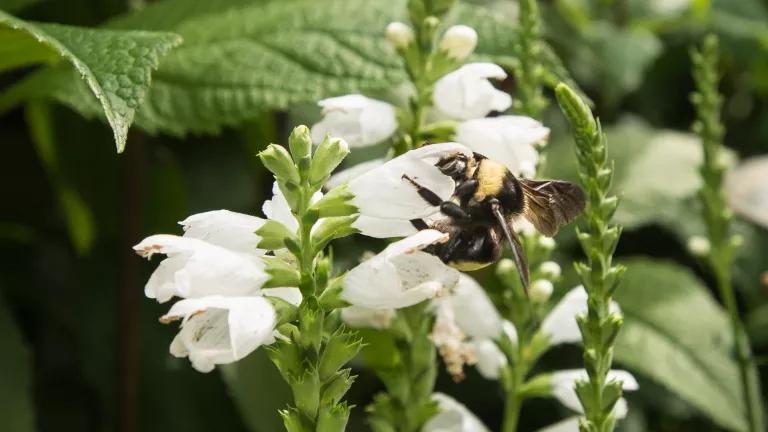
The recently released National Climate Assessment discussed the impacts of climate change on our nation’s water supply and agricultural productivity. The levels of uncertainty regarding the future of our water supply are troubling. Changes in precipitation patterns will intensify droughts and increase heavy downpours. Hotter, more extreme weather will disrupt how well and how much we can grow on farms. The reduction in the Sierra Mountain snowpack will further constrain California’s water supply. I want to read about ways to adapt to and mitigate against our water insecurity problem, and thankfully, one of those pathways is at our fingertips, or under your feet, or in your backyard—depending on your perspective.
Enter soil.
Under the right conditions, soil can act like a natural sponge on our farms and help our farmers be more water secure in times of water insecurity. Take a look at the two soil samples below. Notice the thick chocolate-y consistency of the sample on the left? That’s what healthy soil looks like—airy, full of leftover plant matter, long roots that soil sticks to, earthworms, and active microbes. The sample on the right looks more like a rock on the side of a highway—dry, compacted, chalky, void of life. That clump of dirt would crumble under the slightest bit of pressure.
Healthy soil has incredible water retention capacity. Keeping plant debris on a field helps break a raindrop’s fall, so instead of bouncing off the soil when it falls, it’s absorbed through the layer of plant matter. All the roots make soil more porous, allowing water to penetrate the farm instead of rushing off it. Regenerative agriculture practices like cover cropping and no-till provide the leftover plant debris and roots that make soil more absorbent. NRDC’s research shows that if the top 10 agriculture states practiced cover cropping on half of their corn and soybean farms, those states could retain an additional trillion gallons of water on their farms. That’s a lot of water! Increasing water retention capacity of farmland also means less water lost to runoff during rain events. This has the added benefit of reducing nutrient runoff from our farms, meaning less contamination of our drinking water supplies and reductions in harmful algal blooms across the country.
California is the top producer of agricultural products in the nation. But the production comes at a cost to California’s water supply. California’s agricultural sector uses 80% of the state’s publicly developed water supply. That level of use is unsustainable, and climate change will alter how much water our farms can use. Regenerative agriculture practices can better store water on the farm for those non-rainy days. According to the last USDA Agriculture Census, of the +8 million acres of harvested cropland in California, less than 2.5% practices no-till and only 4% practice cover cropping. The small rates of adoption are worrisome. More troubling is how much water storage potential California is missing out on with those low adoption rates. If we increase those percentages so that half of California’s field crop acres practice cover cropping and other regenerative agriculture practices, California farms can store an additional 10.9 billion gallons, or 33,500 acre feet, of water in soil.
California Farmer, Russ Lester, discusses how cover crops increase water infiltration on his orchard.
With climate change bringing more intense rain events and more extreme droughts, California should invest in regenerative agricultural practices that allow our farms and farmers to be more water secure.
- Finance for the long-term. Voters rejected Prop 3 in the last election, and I see the rejection as an opportunity for the Legislature to pass long-term funding solutions that can be used to finance smarter, more inclusive, and more transparent water conservation efforts, like bolstering soil health. Instead of building expensive reservoirs and dams that harm the environment and provide limited water supply benefits, California should invest in longer-term soil health alternatives that reduce reliance on water diversions from our rivers and streams in the first place.
- Reward stewardship. My colleague helped pilot a program in Iowa that rewards farmers for cover cropping on new agricultural land. Working within the constraints of the Federal Crop Insurance Program, NRDC worked with local NGOs and the Iowa Department of Agriculture to provide an additional $5/acre reduction on farmers’ crop insurance premiums for every acre of land that was newly cover cropped. The credit saves the farmers money on their premiums and reduces crop losses that would otherwise be insured—meaning money saved by the Federal Government. The first year of the pilot is proving to be a success, and Iowa farmers are responding positively to the credit. Hopefully other states step up and recognize opportunities to help their farmers adopt regenerative practices.
- Support holistic management. Regenerate agriculture asks our farmers to think about their farms as a system, not as inputs and yields. While cover cropping is better than not cover cropping, we can reap more soil health benefits when multiple regenerative practices (e.g. crop diversity, crop rotations, no-till) are practiced together. Consider how you care for your own health as an example; you don’t just run a mile or two every day to be healthy. Being healthy requires good nutrition, physical exercise, reprieve from stress, good sleep, and a variety of other regiments. Similarly, to grow healthy soil, we need financial investments for regenerative agriculture practices that nurture our soil back to health holistically.
Call me a soil nerd, but today is World Soil Day, and I’m ever more thankful for all the things our soil provides. The vegetables we eat, the fruit we pick, the flowers we smell, and our connection with the land are born from soil. With our soil working so hard, the least we can do is make sure she’s well fed and cared for.




